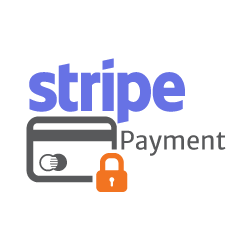Cognitive Behavioral Therapy Techniques for Telehealth
Cognitive Behavioral Therapy (CBT) is a commonly used type of psychotherapy (talk therapy) used by all types of mental health providers. CBT focuses on helping clients generate awareness of their inaccurate/negative thinking habits while teaching them techniques of thinking through challenging situations with more clarity. The goal of cognitive behavioral therapy is to explore the connection between thoughts, feelings, and behavior and structure an approach to address mental health disorders. Therapists who use CBT do so to help their clients reduce distress and teach them how to adapt to tough life experiences.
Brief Overview of the History of CBT
Cognitive behavioral therapy was spearheaded by Dr. Aaron T. Beck, a psychiatrist at the University of Pennsylvania, in the 1960s. Its start was rooted in the studies and practices of psychoanalysis. Beck led experiments and research to test psychoanalytic concepts of depression. Through his research, beck mapped out new ways of how we understand depression. His approach was centered on the fact that individuals with depression experience random or “automatic” negative ideas and thoughts about themselves, the world around them, and their life as a whole. He noticed that throughout sessions, clients had internal dialogues going through their minds at random times.
Beck started working with patients to identify and gain awareness of these thoughts. This is the foundation of cognitive behavioral therapy. Beck believed that if negative thoughts caused negative feelings, that challenging these thoughts could result in positive change.
Throughout that decade, a number of studies observed how cognitions impact an individual’s behaviors and emotions. This came to be known as the cognitive revolution. Over time, CBT grew to be used to treat a huge range of mental and behavioral health conditions across a multitude of different therapy types.
Conditions Treated with CBT
- Depression
- Anxiety
- Insomnia
- Trauma
- ADHD
- Personality Disorders
- Phobias
- Stress Management
- Grief/Loss
Does Telehealth Impact Cognitive Behavioral Therapy Techniques?
Starting in the 1960s, early CBT pioneers would never have concluded that patients would be utilizing virtual technology to meet with their health providers. As of 2021, telehealth is a mainstay in the mental and behavioral health community. Telehealth is a powerful tool that eliminates barriers to mental health care and makes it easy for communities to get the help and attention they need. As for how it impacts cognitive behavioral therapy, the truth is that it doesn’t. With the right telehealth solution, providers can work with their clients just as they would in their offices. They can access their chart, their notes, take new notes, and progress the session no differently than if they were there in person. Below are some methods for practicing CBT techniques via telehealth.
Practicing CBT Techniques for Telehealth
Recognize Cognitive Distortions and Applying Cognitive Restructuring
Cognitive distortions are thought patterns that people recognize, in their own min, to be true when they are actually inaccurate and usually damaging to one’s psyche. Common types of cognitive distortions include:
1) Polarized thinking – sometimes referred to as all-or-nothing thinking, this is when people tend to think in the extremes. Ex: “If I don’t get this right then I am an absolute failure” or “people can only be good or bad
2) Overgeneralization – the idea that because one situation turned out a certain way and now all other situations will also turn out that way. Ex: “This person was mad at me so now everyone else will be mad at me.”
3) Personalization – The concept that things happen to a client personally when they are actually not connected at all. Ex “they went to lunch and did not invite me, so they probably do not like me”
4) Negative Wash – washing all situations with a negative bias and abandoning the positive. Ex: “nothing good ever happens to me”
5) Catastrophizing – fearing the worst will come from the unknown – Ex: “Things will never get better and will always be overwhelming”
Therapists can use cognitive behavioral therapy techniques to help their clients recognize cognitive distortions and their impact on their overall mental health. Then, providers can utilize cognitive restructuring techniques to combat those distortions.
Journaling
Writing is a common cognitive behavioral therapy technique. Clients write down their thoughts, feelings, fears, emotions, and beliefs. They use this writing as a reflection tool to shine a light on negative thought patterns and cognitive distortions, and use it as a baseline to set goals for restructuring. With telehealth, providers can still task their clients to journal between sessions and go over that information the same as an in-person visit.
Practicing New Skills
Cognitive behavioral therapists often work with their clients to practice new skills during in-person visits. This does not have to change with telehealth. The theory is that, while clients are currently unable to regulate their thought patterns, practicing new skills will help them develop the ability to regulate.
Ultimately, cognitive behavioral therapy techniques vary across its many different applications. While the format in which therapy is regularly delivered has changed over time, the new formats have no impact on a provider’s ability to deliver services. If anything, the way telehealth eliminates barriers to care offers the opportunity for providers to implement cognitive behavioral therapy techniques with even more patients than without.







